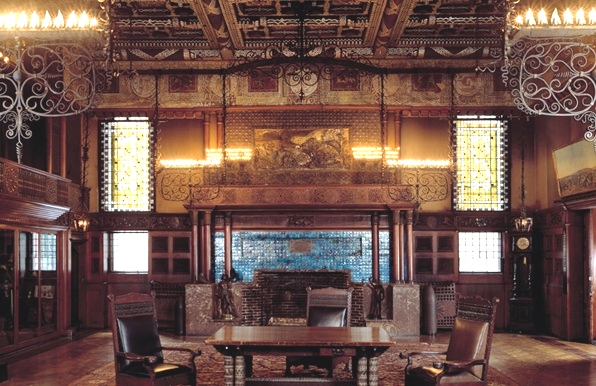
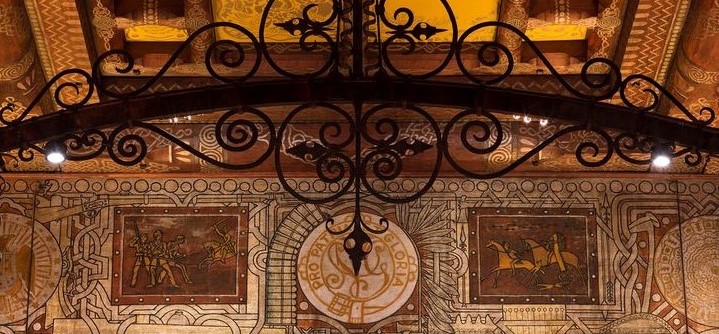
7th Regiment or Park Avenue Armory
Date: 1881
Dimensions: various sizes
Medium: Decorative mural panels
Owner/Location: Park Avenue Armory, 643 Park Avenue, NYC, NY
Description
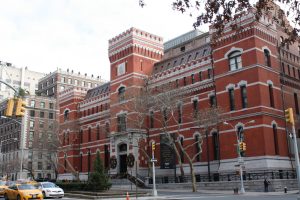
The Seventh Regiment Armory, also known as Park Avenue Armory, is a historic National Guard armory building located at 643 Park Avenue in the Upper East Side neighborhood of Manhattan, New York City. The building is a brick and stone structure built in 1880 and designed in the Gothic Revival style by Charles Clinton.
The main facade of the administration building faces Park Avenue between 66th & 67th Streets, with the large vaulted space for the drill hall in the center of the block. The administration building has provisions for a reception room, a library, veterans room and staff offices for ten regimental companies. Architects and interior designers of the American Aesthetic Movement were commissioned to furnish the rooms and company quarters. The library is known as the Silver Room or “Trophy Room” and was designed by Louis Comfort Tiffany who worked with architect Stanford White as a consultant on the project. The masterpiece of the armory building is the Veterans Room, also known as the Tiffany Room, with hand carved wood panelling and coffered ceiling in the Viking Revival style. Other significant craftsmen with work in the building include Kimbel and Cabus, Alexander Roux, Francis Davis Millet, and the Herter Brothers.
While working on a series of stained glass windows for Tiffany Saint-Gaudens, Millet and several other artists were asked to collaborate on the Seventh Regiment Armory on Park Avenue in New York City through Tiffany’s formation of a creative firm called Associated Artists.
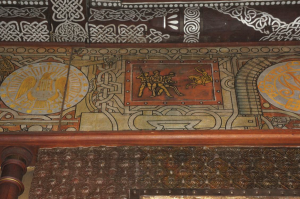
Millet and an Associated Artists partner, George Yewell, worked in the Veteran’s Room at the Armory in 1881. They completed a series of murals, taking on the subject of the history of warfare throughout the world. Eliza Butler in her thesis, “The Civic Art of Francis Davis Millet”
suggest that this project was Millet first attempt to present his understanding of cultural differences by placing Native American cultural practices directly in contrast with contemporary Anglo Saxon ones. This is significant since the 7th Avenue Regiment, which was known as the “silk stocking regiment,” was composed strictly of the most elite men of the gilded age, and Millet’s mural panels were in many ways a call to the men of the regiment to acknowledge and reconcile their positions with the Native American losses as the nation expanded across the continent.
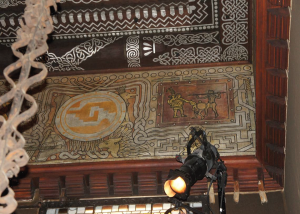
https://www.armoryonpark.org/about_us/history
Inside the Newly Restored Veterans Room in NYC’s Park Avenue Armory
Exhibitions / Provenance
Exhibitions:
Provenance:
Research / Publications
Research:
Publications: